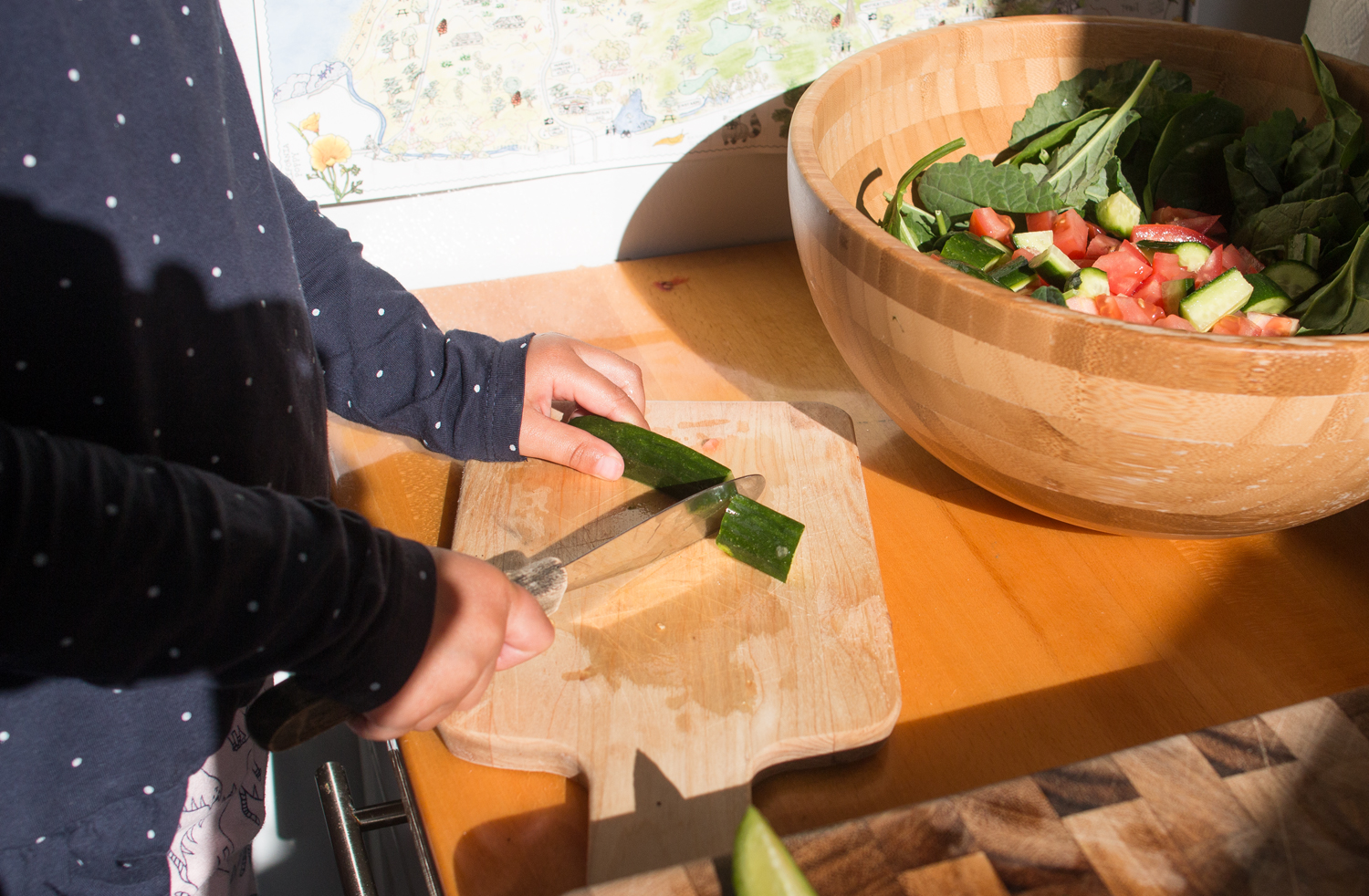Ok, I know that this probably looks like a stretch. The part where I hand a knife to a preschooler. But! Bean’s done so well with it, and her contribution to dinner is now actually very helpful. This is a must-try if you think your kid is ready for it.
A couple months ago, I started searching online for a child-safe knife. You can find a variety of nylon ones for fairly cheap online. But, I kept forgetting to order it and then the one I wanted was out of stock. One day, I watched Bean struggling to chop a green pepper with her wavy vegetable chopper, and realized she was ready. She’s been using that chopper for years already, and watching her clumsily fuddle around trying to chop with the blunt edge, I realized it was probably less safe than a normal knife at this point.
I handed her one of our spreading knives — it seemed to be the right size, one edge is blunt, the other edge is serrated, rounded edge for safety — and slowly demonstrated how to use it. She was so psyched.
She seemed to already know how to use a knife, probably from watching me use one for years. She knew where to put her fingers, and where to hold the knife, and how to slowly rock the knife back and forth. She picked it up right away, working away with a startling focus. (Three year olds can be a little haphazard, their minds busy with imaginary worlds and complicated play scenarios.)
The thing is…this is actually super helpful. A lot of cooking with kids is a make-work exercise. But, once they know how to chop, cooking with them is a game changer. Making chili or soup or salad has become so easy, because I have a little chef next to me. There are some meals where she does all the chopping while I just cook/assemble. It’s pretty cool.
If you think your kid is ready to learn how to chop, here are some tips I’ve learned along the way.
1. Pre-chop everything into flat pieces.
This is so you don’t have a tomato rolling around on the cutting board as they try to chop. So, you chop the green pepper into strips and then they can dice it. Ditto for tomatoes, potatoes, or sweet potatoes. Or, slice a cherry tomato or mushroom in half before they get to it. I’ll also chop a carrot lengthwise before handing it over for further chopping.
2. Start with a wavy vegetable chopper and move on to a small knife later
3. Stand back and don’t interject
Interjecting as a child is chopping is more dangerous than the child chopping. (Unless the kid is doing something obviously unsafe obviously.) I learned this one the hard way — I tried to correct something Bean was doing as she was mid-chop. She broke concentration and ended up with a tiny (tiny) scrape on her finger. Wait until knives are down, and then show what they should be doing differently.
4. Related: don’t mind the small stuff
Things will not be chopped into perfectly sized pieces. She may even give up on a wedge and toss the rest in. Let her own her work and don’t correct. She’ll eventually get it right.
5. Basic set up: bowl of pre-chopped veggies/fruit, a child-size cutting board, and bowl for finished chopped veggies/fruit
I re-use both bowls, just shoveling whatever into it or out of it as I need it.
6. If you have an independent kid, hand over all the reins and let them make a family salad every night
This is a dish they can do all by themselves and own. Bean prefers to contribute to whatever I’m cooking, though.
5. Don’t be afraid to stop and try again in a few months
I didn’t have to do this with the new knife, but when we first started with the vegetable chopper, I could tell Bean just wasn’t ready for it. If your kid is handling the knife dangerously or not respectfully and you’re anxious about someone getting hurt, just commit to trying some other time.
Good luck!







